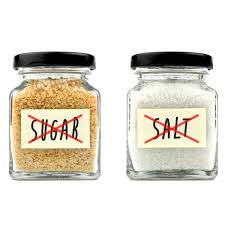
Plant-based diets tend to be healthier. These are the basics you should be aware of before making the switch to a meat-free lifestyle. Even though it sounds restrictive, a well-planned diet of vegetarians or vegans can provide a healthier alternative than eating animal products. These include legumes as well as whole grains, nuts, seeds and legumes. These foods are packed with nutrients and taste delicious.
The most important component of a plant based diet is to eat a variety. It's important that you consume a wide variety both of fruits and veggies, as well a smaller amount of meat. Plant-based diets should include many foods rich in healthy fats such as olive oil and nuts, seeds, avocados, nut butters, and peanut butters. It is recommended to eat lots whole grains such as brown rice and quinoa. You can also eat fish and poultry.

Plant-based diets are easy to follow and require little maintenance. This kind of diet doesn’t require you keep track of calories and follow meal plans. A plant-based diet offers flexibility. Because there are no restrictions, you can eat as much or as little as you like. It won't make you feel guilty about overeating. All the nutrients will still be available to you.
A plant-based diet has a lower risk of developing chronic disease. You are actually at a lower risk for Alzheimer's disease if you eat a plant-based diet. The study, published in the Journal of the American Medical Association, examined diets of 300,000 people and found that people who adopted a plant-based diet were less likely to develop type 2 diabetes. A plant-based diet can reduce a person's chance of developing heart disease or diabetes.
While a plant-based diet may have some health benefits, there are some things that you need to remember. Being a plant-based eater does not mean that you must be vegan. Many people enjoy a plant-based diet, but it's important to choose the right food plan. This allows you to experience a wide range of flavours and avoids the pitfalls associated with meat-based diets. The most important thing to remember when eating a plant-based menu is quality. You will eat healthy, nutritious food if you can find high quality protein, nuts and seeds.

A plant-based diet can provide many health benefits, such as a healthier mind. According to a published study in Translational Psychology journal a plant-based eating plan is believed to help reduce inflammation, improve metabolism and manage weight. It may also help those with diabetes or other autoimmune conditions. If you can incorporate plant-based diets into your daily life, it is an excellent way to improve your overall health.
FAQ
How can I live my best life everyday?
Finding out what makes your heart happy is the first step to living a fulfilled life. Once you know what makes you happy, you can work backwards from there. You can also inquire about the lives of others.
Dr. Wayne Dyer's book "How to Live Your Best Life" is also available. He discusses happiness and fulfillment in every aspect of our lives.
What are the ten best foods to eat in America?
The 10 best foods to eat include:
-
Avocados
-
Berries
-
Broccoli
-
Cauliflower
-
Eggs
-
Fish
-
Grains
-
Nuts
-
Oats
-
Salmon
Do I have to count calories?
It is possible to wonder "What diet is best for me?" or "is counting calories necessary?" The answer is dependent on several factors like your current health status, personal goals, your lifestyle, and your preferences.
The Best Diet For Me: Which One Is Right?
My personal health, goals and preferences as well as my lifestyle determine which diet is best for me. There are many good and bad diets. Some are better for certain people than others. So what should I do? What can I do to make the right decision?
These questions are addressed in this article. The article starts by introducing the many types of diets currently available. Next, we'll discuss the pros and cons for each type of diet. Finally, we'll discuss which one is best.
To begin, let's take a quick look at the different types of diets.
Diet Types
There are three types of diets available: ketogenic, high-protein, and low fat. Let's look at each one briefly.
Low Fat Diets
A low-fat diet restricts fat intake. This is accomplished by decreasing the intake of saturated fats such as butter and cream cheese. They are replaced by unsaturated fats such as avocados, olive oil, and cream cheese. A low fat diet is often recommended for those who want to lose weight quickly and easily. This diet can cause problems such constipation as heartburn, indigestion, and even stomach pain. If a person doesn’t receive enough vitamins from their foods, this can lead to vitamin deficiency.
High Protein Diets
High protein diets reduce carbohydrates to favor of proteins. These diets often have higher levels of protein than most other diets. These diets can help increase muscle mass and decrease calories. They may not be able to provide sufficient nutrition for people who need it. They may also be too restrictive and not suitable for everyone.
Ketogenic Diets
Also known as keto diets, ketogenic diets are also called keto diets. They are high fat and moderately carbohydrate and protein-rich. They are typically used by athletes and bodybuilders because they allow them to train harder and longer without getting tired. However, they must be used with caution to avoid nausea, headaches and fatigue.
What is the difference among a virus or a bacterium and what are their differences?
A virus is a microscopic organism that cannot reproduce outside its host cell. A bacterium is an organism that splits itself in two. Viruses can be as small as 20 nanometers, while bacteria can grow up to 1 micron.
Viruses are usually spread through contact with infected bodily fluids, including saliva, urine, semen, vaginal secretions, pus, and feces. Bacteria are usually spread through direct contact with contaminated objects or surfaces.
Viruses can enter our bodies through cuts, scrapes, bites, or other breaks in the skin. They may also get into the body through the nose and mouth, eyes, ears or rectum.
Bacteria can get into our bodies through cuts, scrapes and burns, insect bites, or other skin breaks. They may also come into our bodies through food, water, air, soil, dust, or animals.
Both bacteria as well as viruses can cause illness. However, viruses cannot reproduce within their hosts. They only cause disease when they infect living tissue.
Bacteria can cause illness by multiplying in the body. They can spread to other parts of our bodies. They can even invade other parts of the body, which is why antibiotics are necessary to eradicate them.
Exercise: Is it good or bad for immunity?
Exercise is good for your immune systems. When you exercise, your body produces white blood cells which fight off infections. You can also eliminate toxins from the body. Exercise can help prevent heart disease and cancer. Exercise can help reduce stress.
But, too much exercise can lead to a weakening of your immune system. If you work out too hard, your muscles become sore. This can cause inflammation as well as swelling. Your body will then produce more antibodies in order to fight infections. Problem is, extra antibodies can trigger allergies and other autoimmune conditions.
So, don't overdo it!
What lifestyle is most healthy?
A healthy lifestyle means eating healthy foods, exercising regularly, sleeping well, and avoiding stress. This will ensure that you live a long healthy life.
Start small by changing your diet and exercising routine. You can lose weight by walking 30 minutes each day if you are looking to lose weight. You can also take up dancing or swimming if you are looking to be more active. You could also sign up to an online fitness platform like Strava, which tracks your activity.
How does an antibiotic work?
Antibiotics are drugs which destroy harmful bacteria. Antibiotics are used for treating bacterial infections. There are many options for antibiotics. Some can be taken orally while others are injected. Others are topically applied.
Many people who have been exposed can be prescribed antibiotics. For example, if someone has had chicken pox, he or she might take an oral antibiotic to prevent shingles later on. Or, if someone has had strep throat, he or she might receive an injection of penicillin to help prevent pneumonia.
When antibiotics are given to children, they should be given by a doctor. Children are more susceptible to side effects from antibiotics than adults.
The most common side effect of antibiotics is diarrhea. Other possible side effects include stomach cramps, nausea, vomiting, allergic reactions, headaches, dizziness, and rashes. These side effects are usually gone once the treatment is complete.
Statistics
- In both adults and children, the intake of free sugars should be reduced to less than 10% of total energy intake. (who.int)
- The Dietary Guidelines for Americans recommend keeping added sugar intake below 10% of your daily calorie intake, while the World Health Organization recommends slashing added sugars to 5% or less of your daily calories for optimal health (59Trusted (healthline.com)
- According to the Physical Activity Guidelines for Americans, we should strive for at least 150 minutes of moderate intensity activity each week (54Trusted Source Smoking, harmful use of drugs, and alcohol abuse can all seriously negatively affect your health. (healthline.com)
- WHO recommends reducing saturated fats to less than 10% of total energy intake; reducing trans-fats to less than 1% of total energy intake; and replacing both saturated fats and trans-fats to unsaturated fats. (who.int)
External Links
How To
What does the "vitamins” word mean?
Vitamins are organic substances found naturally in food. Vitamins help us absorb nutrients from foods we eat. Vitamins cannot be made by the body; they must be taken from food.
Two types of vitamins exist: water-soluble vitamin and fat-soluble vitamin. Water-soluble vitamins dissolve quickly in water. You can find vitamin C,B1 or thiamine, B2 or riboflavin and B3 or niacin, B3/niacin, B6/pyridoxine, folic Acid, biotin and pantothenic Acid as examples. The liver and fatty tissues are home to fat-soluble vitamins. Examples include vitamin D, E, K, A, and beta carotene.
Vitamins can be classified according to biological activity. There are eight major vitamin groups:
-
A - Essential for healthy growth and health maintenance.
-
C - essential for nerve function and energy generation.
-
D - essential for healthy bones, teeth, and gums.
-
E is necessary for good vision, reproduction.
-
K - Required for healthy nerves and muscles.
-
P - Essential for strong bones and teeth.
-
Q - aids digestion and absorption of iron.
-
R - Red blood cells are made from red blood cells.
The recommended daily intake (RDA), of vitamins varies with age, gender and physical condition. The U.S. Food and Drug Administration (FDA) sets the RDA values.
For adults aged 19 and older, the RDA for vitamin B is 400 micrograms daily. Because it is essential for the development of the fetus, pregnant women should consume 600 micrograms per daily. Children ages 1-8 require 900 micrograms per day. Babies under one-year old require 700 mg per day. Between 9 and 12 years of age, however, this drops to 500 mg per day.
Children aged 1-18 years need 800 micrograms daily, while children overweight require 1000 micrograms per days. Children who are severely obese or underweight will need 1200 micrograms each day.
Children 4-8 years old who have anemia must consume 2200 micrograms of Vitamin C daily.
2000 micrograms is the minimum daily intake for adults over 50 years old to maintain good health. Women who are pregnant or breastfeeding need 3000 micrograms per day due to increased nutrient requirements.
Adults over 70 require 1500 micrograms each day, since they lose around 10% of their muscle mass every decade.
Women who are pregnant and lactating need more nutrients than the RDA. Pregnant and breastfeeding women require 4000 micrograms each day during pregnancy and 2500 Micrograms each day after delivery. Breastfeeding moms need 5000 micrograms each day when breastmilk production occurs.